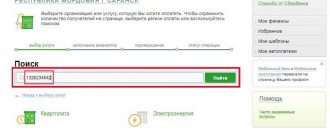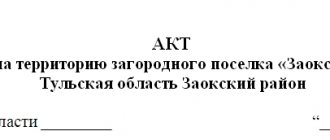A private house
To save on heating, owners of a private home need to install a gas boiler with weather-compensating automation and multi-circuit control, and also eliminate excess heat loss. “In such models, the outdoor thermostat “reads” the temperature outside the window and adjusts the strength of the heating elements depending on how many degrees it is outside: – 5°C or – 20°C. In this case, a minimum amount of energy is consumed to achieve the required indicators. In turn, the multi-circuit control function allows you to maintain set temperatures in different rooms. For example, in the kitchen it’s +20 degrees, in the living room +22, and in the bedroom +18. In this case, you can save up to 25% of energy ” says Armen Kalinin , export director of FRISQUET in Russia, a leading French manufacturer of heating equipment.
How to choose a heating system for a private home?
What heating is best for a country house?
It is traditionally believed that the most economical are expensive condensing models, which can optimize gas consumption by up to 25–30%. But in practice this is not the case. Today there are low-temperature heat generators on the market that compete well with “condenser heaters,” continues Kalinin. Thus, due to their design and 95% efficiency, they can save from 4 to 7% of energy consumption. And the ability to maintain different temperatures in different rooms adds another 25%. In natural numbers, it will look like this: if the boiler nominally consumes 2.78 cubic meters of gas per hour, therefore, optimization per day will be 22.24 “cubes”, and per month - 667.2. During the heating season this is 4,670 cubic meters of gas. If you make the calculation according to the tariffs of the Moscow region (each region has its own), then during the heating season the homeowner will spend 6,300 rubles on gas instead of 9,500.
Is it possible to hope for a refund of overpaid funds?
Situations often arise when the quality of heating does not correspond to the cost indicated in payment documents. When arguing with the housing and communal services service, you need to be patient and collect documentary evidence that you are right. It is extremely rare that management companies agree to resolve the dispute in favor of the client, therefore, in order to achieve justice, you will have to go to court.
A prerequisite for a refund may be violations of thermal conditions and sanitary standards by the management company. Violations must be recorded in an act. To document your case, you need to do the following:
- Submit a message to the emergency service about violations.
- Monitor the employee who received the information and took into account the violation.
- Determine the date of visit by management company employees and ensure that they record violations of thermal conditions or sanitary standards.
Apartment building
In the case of apartment buildings, the question of future savings largely depends on the designers: if they design their own roof boiler room or individual heating unit (IHP) in a high-rise building, this will ensure significant optimization of thermal energy. According to the personal experience of Marat Azimov, manager of an HOA in the north-west of the Moscow region, the same boiler room on the roof allows you to reduce the numbers in the “Heating” column by 2 times (tenants do not pay for heat loss) and up to 30% in the “DHW” column.
“Our residents pay about 50 rubles for hot water. per cubic meter in summer and 100 rubles. in winter, and in those houses in our city that are connected to central heating, the tariff is constant - 129 rubles per cubic meter. The difference is at least 30%. The heating rate differs even more significantly: depending on the temperature outside, ours ranges from 5–15 rubles. per square meter during the heating season, plus 5.17 rubles. for boiler room maintenance. Total 10–20 rubles. for a “square” versus the citywide 58 rubles,” says Azimov.
Another opportunity to save thermal energy in an apartment building is an equipped individual heating unit with weather-dependent automatic control. True, here the effect will be more modest: according to experts, savings on heating will be about 20%. Also, at the stage of the house project, the developer may decide to install an apartment-by-apartment heating system. In this case, the owner of the apartment becomes the owner of the gas (usually) boiler. And he has the same opportunities to save as the owner of a private house.
How to choose heating radiators?
Replacing radiators: which ones to choose, how to install?
Questions and answers about paying for heating.
1. Why did the Republic of Bashkortostan switch to a new heating payment scheme?
Since the beginning of the heating season 2019-2020. All municipalities of the Republic of Bashkortostan are switching to a new method of payment for thermal energy - during the heating season, the so-called “payment upon delivery” scheme. This decision was made by Decree of the Government of the Republic of Belarus No. 479 of September 28, 2018.
2. What is the difference between the payment method during the calendar year and during the heating season?
Under the “pay as you go” scheme, heating payments to property owners will be calculated based on the actual consumption of thermal energy only in the autumn-winter period. Previously, residents paid for heating according to the “1/12” scheme, which implies an even, monthly payment for heat throughout the calendar year with annual adjustments. Under the new “pay as you go” scheme, payments will be made only during the period when heating is supplied to houses.
The “pay as you go” scheme is more understandable and transparent for residents. If you have a common house heat meter (CHM), the calculation will be based on the actual consumption of the resource according to the readings of the common house heat meters. In other words, it will be clear how much you actually consumed per month and how much you need to pay. And if the ODPU is not established, then calculations will be made based on the standards established by the State Committee of the Republic of Belarus on Tariffs.
3. Will the monthly amount payable for heating change under the “pay as you go” scheme?
The size of the heating fee will be determined depending on the availability of a common house heat meter:
- if there is an ODPU - based on actual readings (proportional to the area of the premises in an apartment building). It is important to note that the key factor influencing heat consumption in the presence of ODPU is the outside air temperature - the colder it is outside, the more thermal energy the house spent to maintain a comfortable indoor temperature. Thus, the difference in monthly charges will vary greatly - from minimal amounts in autumn and spring, to significant amounts in winter.
- in the absence of ODPU - based on approved consumption standards, which depend on the number of storeys of the building.
During the summer months, no heating charges will be made.
4. Who should install common house heat metering devices (CDMU)?
The costs of installing a common house heat meter (common heating meter) are borne by the owners. Residents can install such a device themselves, send the minutes of the owners’ meeting with this decision to their management company, or contact a specialized organization.
It is important to note that the ODPU readings are taken by the MA or the service organization and are already transferred for accruals to BashRTS if residents have switched to direct contracts.
5. Who sets standards for heating consumption in houses without ODPU?
Thermal energy consumption standards were established by the State Committee of the Republic of Belarus on Tariffs on the basis of Decree of the Government of the Republic of Belarus dated September 30, 2019 No. 596. The utility consumption standard, approved by the State Committee of the Republic of Belarus on Tariffs, is calculated for a calendar month and is not recalculated for the number of days the service is provided. You can familiarize yourself with the standards on the BashRTS LLC website in the “Standards” section
6. Who takes and transmits ODPU readings to calculate the monthly heating fee?
The responsibility for taking and transmitting readings of the ODPU of utility resources remains with the organization managing the MKD. If MKD has switched to direct contracts with BashRTS LLC, then the servicing (management) organization transfers the ODPU readings to BashRTS LLC no later than the 26th day of the billing month.
7. Will there be a recalculation for those months of 2021 when the previous payment method was used during the calendar year?
In the first quarter of 2021, owners of residential and non-residential premises of apartment buildings and residential buildings will have their heating fees adjusted for 2021, since before the start of the heating season of this year, the previous payment method was used - evenly throughout the calendar year. And for 2021 no adjustment will be required because this year, owners of premises in apartment buildings will pay for heating only during the heating season.
8. Why is the standard charged for a full month in houses without ODPU, because the heating was turned on for only a few days?
The utility consumption standard, approved by the State Committee of the Republic of Belarus on Tariffs, is calculated for a calendar month and is not recalculated for the number of days the service is provided.
9. Why is there no “heating” and/or “DHW” column in the receipt?
If the apartment has an individual DHW meter, charges are calculated based on the readings of the meter. If the volume of consumption according to the DHW IPU is equal to 0, there will be no accrual for this service and will not be displayed on the receipt. Provided that the consumption according to the ODPU is also 0, if there is actual consumption of heat by the device, then the share for heating staircases and other common areas of the house will be accrued accordingly.
If there is a common building metering device (CDMU) for thermal energy in an apartment building, utility bills are calculated according to the readings of the metering device. If the actual volume of thermal energy consumption according to the TDPU for the current month was 0 Gcal, there will be no accrual and will not be displayed on the receipt.
Thus, the absence of the lines “heating” and/or “DHW” in the payment document is explained by the lack of charges for these services, or there is no utility service in the apartment building.
10. Is it possible to install an individual heat meter in an apartment?
You should not purchase an apartment heat meter until you are convinced of the technical feasibility of its installation.
To approve the installation, you must contact the building management company or heat supply organization in writing, which can give permission to install the meter; copies of documents confirming the ownership of the apartment, as well as the registration certificate of the apartment, must be attached to the application. Next, the MA or TCO provides technical conditions that must be met when installing the meter.
The technical specifications must contain the following factors:
1. An apartment heat meter must take into account the heat consumption of the entire apartment.
2. The heat meter must be registered in the state register of measuring instruments.
3. The heat meter must be installed in accordance with the manufacturer’s installation instructions.
4. Installation of the heat meter must be carried out by a specialized organization.
In accordance with RF PP No. 137 dated February 13, 2019, project development is not required.
When choosing a company that will install the meter, pay attention to the presence of a license. She must also have all the necessary documentation (certificates, licenses, SRO approvals) and a guarantee for the work performed. The specialist installs the heat meter and carries out commissioning work; you also need to sign an acceptance certificate.
Having all the documents, you can make a purchase by choosing any heat meters for heating in the apartment that comply with established standards.
Be sure to take from the seller both cash receipts and sales receipts, operating instructions, warranty card and a copy of the certificate of appropriate quality level.
After installing the metering device, it is necessary to submit an application to the heat supply organization for approval of the TE metering device into operation, which, in turn, as planned must carry out the approval and sealing of the metering device within the specified time frame and record the initial readings, i.e. the device will be accepted for commercial registration.
At the admission it is necessary to present passports for the heat meter with valid verification.
11. How will charges be made in houses with heat IPU?
There are communal and individual metering devices. The first are intended to account for the consumption of thermal energy by the entire apartment building for the billing period, and the second - in each apartment. The heating fee is calculated based on the amount of heat consumed for a certain billing period, according to the tariff approved by the State Committee of the Republic of Belarus on Tariffs.
According to the amendments made to the RF PP No. 354 dated 05/06/2011. it has been established that it is possible to calculate the amount of payment for heating based on the readings of individual heat energy meters in houses that are equipped with a common house heat energy meter.
Owners/users of residential premises will pay for heat as much as the individual device calculates, plus that part of the heat that goes to heating staircases, elevator halls, etc. is added to this. This is called heat for general house needs (DH).
12. Will there be benefits?
Social support for certain categories of citizens when paying for housing and communal services will be adjusted to the growth of payments, that is, it will be provided taking into account the seasonality of payments. As citizens' fees increase, compensation for expenses for housing and communal services will also increase.
Measures of social support for the population in paying for housing and communal services are provided to citizens in the form of subsidies and monthly cash compensation (MCC). The following categories of citizens have the right to monthly monetary compensation: disabled people, participants in the Great Patriotic War, Chernobyl survivors, labor veterans, large low-income families. The second most important payment is a subsidy for housing and communal services for citizens with low incomes. The amount of the subsidy can be calculated independently using a specially designed online calculator https://rcspn.mintrudrb.ru/housing-subvention-calculator.
How else can a resident of an apartment complex save money?
In those houses built after 2012, saving on heating is quite simple. Typically, these apartment buildings use a horizontal heat distribution system throughout the apartments and, in addition to common house heat meters, individual meters are installed. This allows you to immediately reduce heating payments by 20% compared to those apartments that are not equipped with their own meters, adds Armen Kalinin.
To save even more, you should:
- insulate the balcony and front door, install sealed double-glazed windows - up to 40% of the heat leaves the apartment through the windows;
- install bimetallic radiators. They have the highest heat transfer - 380 W/m*K (for comparison: for cast iron batteries this figure is 52, for steel - 65, for aluminum - 230);
- install thermostats on batteries - this will avoid overheating and, as a result, overpayments for heating;
- Clean radiators regularly, since even a 1-2 mm layer of plaque can reduce heat transfer efficiency by about 10-15%.
How to legally move batteries in an apartment?
How to reduce heating bills if the radiators are barely warm?
The director of the legal service “Unified Center for Protection” (edin.center) Konstantin Bobrov answers:
In accordance with the legislation of the Russian Federation, payment for heating utilities is carried out in one of two ways: during the heating period or evenly throughout the calendar year. Therefore, in itself, charging for heating in the summer is provided for by law and is legal.
Which method to use is chosen by the executive authority of the constituent entity of the Russian Federation (that is, the region in which you live). According to the law, if the payment method for heating utilities has been chosen evenly throughout the calendar year, then it will begin to operate on July 1, 2021. Accordingly, 0.99 Gcal is the average for the entire period from 07/01/2019 to 07/01/2020.
If you do not understand the calculation itself and the final figures, it is recommended that you first contact the management company with a written statement - asking them to explain and justify the calculations. If, in your opinion, the response received does not correspond to the request, then you need to contact the tariff service in your region with a complaint.
Can the management company issue an additional bill for heating?
How is heat energy consumption calculated?









